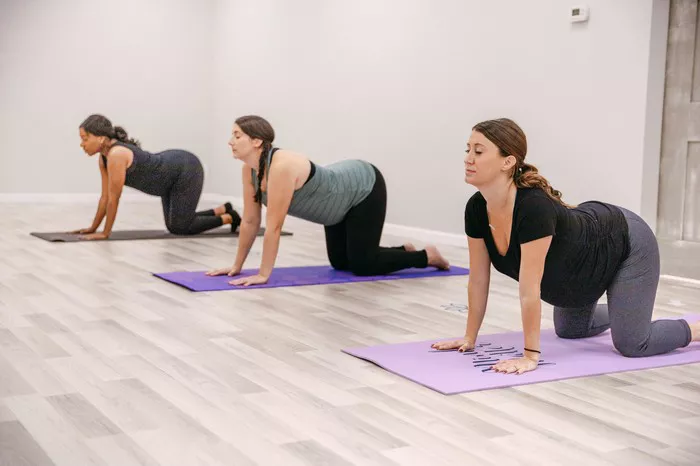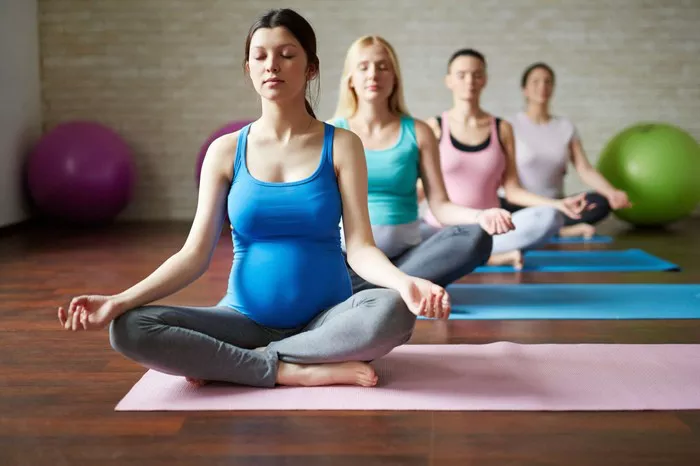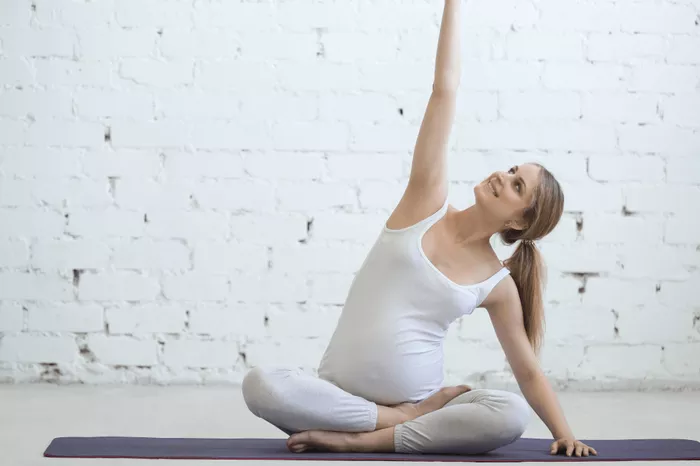In the world of fitness and wellness, there are a multitude of exercise routines to choose from, each claiming its own set of benefits. Two popular methods that have been gaining momentum in recent years are Aerial Yoga and Pilates. Both of these forms of exercise emphasize the importance of strength, flexibility, and mindfulness, but they do so in different ways. If you’re considering adding one of these practices to your routine, you may be wondering: which is better—Aerial Yoga or Pilates?
In this article, we will break down both Aerial Yoga and Pilates, exploring their differences, benefits, and the unique aspects that make each practice stand out. By the end of this guide, you will have a clearer understanding of which method might be best suited for your personal fitness goals.
What is Aerial Yoga?
Aerial Yoga, also known as AntiGravity Yoga or Fly Yoga, is a unique style of yoga that uses a hammock or silk fabric suspended from the ceiling. This hammock acts as both a prop and a support system, allowing practitioners to perform traditional yoga poses with an added element of suspension. The hammock allows for an increased range of motion, helps to decompress the spine, and facilitates a greater stretch, especially in poses that would typically require more flexibility or balance.
In Aerial Yoga classes, students typically perform a variety of movements, including inversions (where the body is upside down), backbends, and standing poses, all while being partially or fully supported by the hammock. The hammock also provides extra comfort and protection, making it easier for practitioners to deepen stretches and perform challenging poses without putting excess strain on their joints.
Benefits of Aerial Yoga
Increased Flexibility: The suspension of the hammock allows for a deeper stretch in traditional yoga poses, particularly in the hips, back, and shoulders. This extra support can also make it easier to get into poses that would be difficult on the ground, improving overall flexibility over time.
Spinal Decompression: Aerial Yoga is particularly beneficial for people who suffer from back pain or tension. By performing inverted poses or simply being supported by the hammock, the spine is gently decompressed, which can help relieve pressure and improve alignment.
Core Strengthening: Aerial Yoga engages the core muscles throughout various poses, especially when balancing in the hammock or performing inversions. These movements strengthen the abdominal muscles, which is crucial for overall stability and posture.
Improved Balance and Coordination: Working in the suspended hammock challenges your balance and proprioception (the awareness of where your body is in space). This can lead to improvements in overall coordination, helping you move more fluidly and confidently.
Stress Relief: The focus on breathwork, combined with the calming nature of the hammock, makes Aerial Yoga a great way to relieve stress. The feeling of being suspended or floating can have a deeply relaxing effect on both the body and mind.
Fun and Engaging: The novelty of practicing yoga in the air can make it feel like a playful and exciting experience. Many practitioners enjoy the feeling of freedom and weightlessness that Aerial Yoga provides, making it a fun alternative to traditional yoga classes.
What is Pilates?
Pilates, developed by Joseph Pilates in the early 20th century, is a low-impact exercise method focused on strengthening the core muscles, improving flexibility, and promoting overall body awareness. Pilates is primarily performed on a mat or with specialized equipment, such as a reformer (a machine with springs, straps, and a sliding carriage). The core principles of Pilates are concentration, control, centering, flow, precision, and breathing.
Unlike traditional yoga, which emphasizes flexibility and mindfulness, Pilates places a strong emphasis on strength and control, particularly in the abdominal muscles, lower back, hips, and glutes. While Pilates incorporates stretching, it is often seen as a more dynamic and strength-building practice compared to the slower-paced nature of yoga.
Benefits of Pilates
Core Strengthening: Pilates is widely known for its focus on building core strength. It targets the deep stabilizing muscles of the abdomen, lower back, and pelvis. A strong core is essential for posture, balance, and overall physical health.
Posture Improvement: Pilates encourages awareness of body alignment and proper posture. By strengthening the core and elongating the spine, Pilates helps to improve posture and prevent back pain, especially for people who spend long hours sitting at desks.
Flexibility: Although Pilates is primarily focused on strengthening, it also promotes flexibility. The controlled movements and stretching sequences in Pilates help improve the range of motion and flexibility, particularly in the spine, legs, and hips.
Injury Prevention and Rehabilitation: Pilates is often used in physical therapy and injury rehabilitation because it is gentle on the body while promoting muscle balance. It helps to strengthen muscles in a way that supports and protects the joints, reducing the risk of injury.
Full-Body Toning: Pilates focuses on working all the major muscle groups, leading to a balanced and well-toned body. Many Pilates exercises work multiple muscles simultaneously, offering a full-body workout.
Mind-Body Connection: Pilates encourages mindfulness and body awareness, similar to yoga. The practice emphasizes concentration and controlled movements, allowing practitioners to connect deeply with their bodies and breath.
Key Differences Between Aerial Yoga and Pilates
While both Aerial Yoga and Pilates promote flexibility, strength, and mindfulness, they differ significantly in their approaches and methods.
Focus: Aerial Yoga combines the principles of traditional yoga with the added element of suspension, making it an excellent choice for individuals seeking flexibility, relaxation, and spinal decompression. Pilates, on the other hand, is primarily focused on building core strength and body control, making it ideal for those who want to improve posture, stability, and muscle tone.
Equipment: Aerial Yoga requires a hammock or aerial silk, which adds an element of suspension to the practice. Pilates can be done on a mat or with equipment such as a reformer, which uses springs for resistance. Both methods use specialized equipment, but Pilates equipment is generally more complex and offers a broader range of resistance exercises.
Movement Style: Aerial Yoga involves fluid, flowing movements that often include inversions, backbends, and stretches, allowing for a deeper stretch and relaxation. Pilates involves precise, controlled movements with an emphasis on alignment and core strength. The movements in Pilates are often more grounded and focus on controlled, muscle-targeted exercises.
Accessibility: Aerial Yoga may be more challenging for beginners, particularly due to the use of the hammock and the requirement for some level of balance and coordination. Pilates, on the other hand, can be easily adapted for all fitness levels, making it a good choice for people who are new to exercise or have specific injury concerns.
Spiritual and Mindful Elements: Aerial Yoga, like traditional yoga, often incorporates elements of mindfulness, meditation, and breathwork. It is as much about emotional well-being and relaxation as it is about physical strength. Pilates is more focused on the physical aspect of exercise, with less emphasis on spirituality or relaxation.
Which is Better for You?
When deciding between Aerial Yoga and Pilates, it is essential to consider your personal fitness goals, preferences, and any existing physical conditions.
Choose Aerial Yoga if: You are looking for a fun, engaging, and low-impact workout that emphasizes flexibility, balance, and stress relief. Aerial Yoga is perfect for those who enjoy a playful atmosphere and want to improve their flexibility, decompress their spine, and build core strength. It is also ideal if you want to explore a new form of yoga with a focus on inversions and suspension.
Choose Pilates if: You are looking for a more focused, strength-building workout that emphasizes core stability, posture, and full-body toning. Pilates is a great choice if you want to improve muscle control and balance while also addressing any existing physical issues such as back pain or poor posture. Pilates can be easily adapted for people of all fitness levels and is highly effective for injury prevention and rehabilitation.
Conclusion
Ultimately, the choice between Aerial Yoga and Pilates comes down to your fitness goals and personal preferences. Both offer unique benefits and challenges, and neither is objectively “better” than the other. If you’re drawn to the idea of floating in the air and experiencing a more fluid, mindful practice, Aerial Yoga might be the right fit. If you’re more interested in strengthening your core, improving your posture, and engaging in controlled, low-impact movements, Pilates may be the way to go.
You can also try incorporating both practices into your routine for a well-rounded fitness plan. By combining the flexibility and relaxation of Aerial Yoga with the core strength and toning of Pilates, you’ll be able to experience the best of both worlds!
No matter which option you choose, remember that consistency is key. Both Aerial Yoga and Pilates offer incredible benefits that can enhance your overall health, wellness, and fitness levels—so start exploring and enjoy the journey.
Related Topics:

















